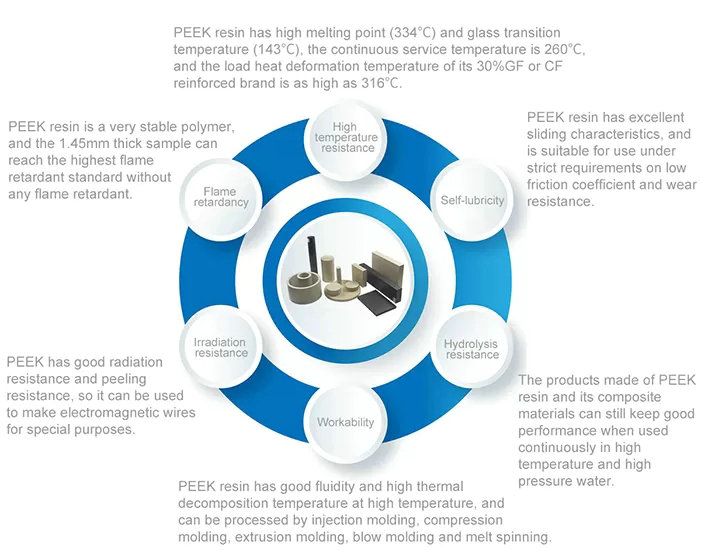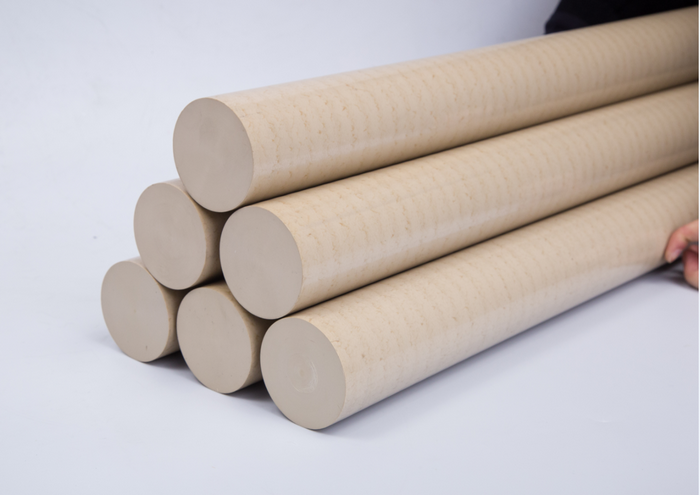PEEK is a high-performance engineering plastic with many significant advantages compared to other engineering plastics. PEEK has excellent properties such as high temperature resistance, excellent mechanical properties, good self-lubrication, chemical resistance, flame retardancy, peel resistance, radiation resistance, stable insulation, hydrolysis resistance, and easy processing.

PEEK Rods, also known as polyether ether ketone rods, are semi-finished profiles extruded from PEEK raw materials, featuring characteristics such as high temperature resistance, high wear resistance, high tensile strength, and good flame retardancy.
Applications of PEEK rods:
PEEK rods can be used to manufacture various specifications of PEEK parts, suitable for high-demand mechanical components such as gears, bearings, valve seats, sealing rings, pump wear rings, and gaskets.
Parts processed with PEEK rods are widely used in critical connections in aerospace, medical, semiconductor, pharmaceutical, and food processing industries.
Four characteristics of PEEK materials:
1, PEEK plastic has a small shrinkage rate during injection molding, which is beneficial for controlling the dimensional tolerance range of PEEK injection molded parts, resulting in higher dimensional accuracy compared to common plastics.
2, Low coefficient of thermal expansion, resulting in minimal dimensional changes with temperature variations (due to changes in environmental temperature or frictional heat generation during operation).
3, Good dimensional stability, referring to the ability of plastic products to maintain dimensional stability during use or storage. This is because the activation energy of polymer molecules increases, causing some degree of chain segment curling.
4, Outstanding resistance to thermal hydrolysis. PEEK has very low water absorption in high temperature and high humidity environments, unlike common plastics such as nylon, which undergo significant dimensional changes due to water absorption.

Issues to consider in PEEK rod material processing:
PEEK also faces a challenge common to polymer materials—elimination of molecular stress. The general method involves heating after extrusion to eliminate molecular stress. The setting of oven temperature is related to the position of material placement and material density. Particularly crucial are the control of baking time and temperature.
After several days of baking at different temperatures, the molecular stress of PEEK rod materials is basically eliminated, but it cannot be completely removed.
Therefore, the following issues should be noted during material machining:
1, If processing into tubes or sealing gaskets using round bars, attention should be paid to drilling control, such as selecting the size of the drill bit, ensuring the drill bit is sharp enough, and controlling the machine tool speed.
2, When milling the surface of round bars, be cautious not to cut too fast or remove too much material at once. Progress gradually and control the speed properly.
3, By addressing the above considerations during material processing, unnecessary troubles can be avoided, thereby improving processing efficiency and product qualification rate.